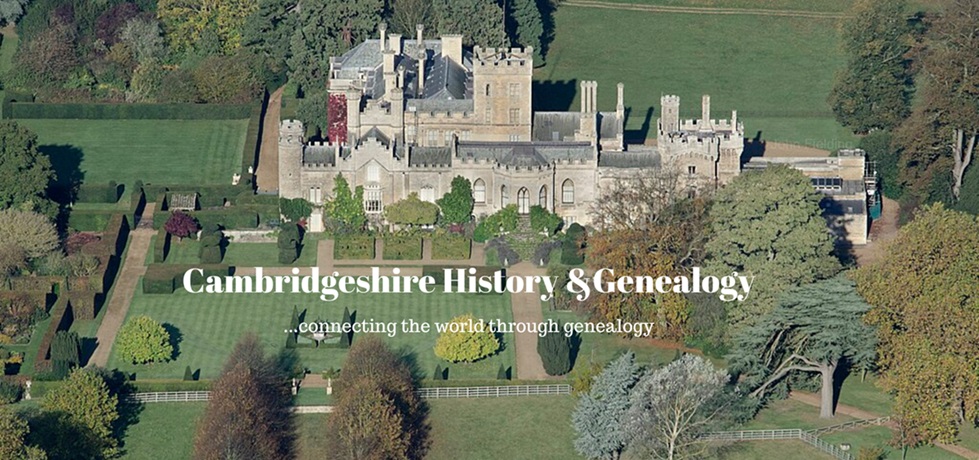Extract from Kelly's Directory of Cambridgeshire 1929
HADDENHAM is a village and parish, with a station on the Ely, Sutton and St. Ives branch of the London and North Eastern railway, 78 miles from London, south-west from Ely and 15 north from Cambridge, in the South Witchford hundred, petty sessional division county court district and union of Ely, Isle of Ely and rural deanery of Ely, archdeaconry of Wisbech and diocese of Ely. The church of Holy Trinity, originally founded by St. Ovin in 673 A.D. is a building of stone consisting of chancel, nave, aisles, transepts, north and south porches and an Early English tower 72 feet high, rebuilt in 1876 at a cost of £1,900 and containing a clock (placed in 1878) and 6 bells, rehung to the memory of Charles Phillip Yorke, 4th Earl of Hardwicke, who died Sept. 17, 1873: the font in use, a 14th century work, is curiously carved, but in the south perch stands an earlier and perfectly plain font, which was dug up in the churchyard, and is presumed to have belonged to the former church: the chancel was restored in 1878, at a cost of about £800, and in 1910, at a cost of about £200: the nave and aisles were also restored in 1878, at a coat, including the erection of a high-pitched roof, of over £4,000; the transepts were rebuilt at a cost of £800 as a memorial to Archdeacon France, of Ely, sometime president of St. John's College, Cambridge: the total cost of the restorations amounted to £5,450: in 1897 the churchyard was enlarged and new gates erected in commemoration of the sixtieth year of the reign of H.M. the late Queen Victoria: the interior was reseated some time previous to 1897, and now affords 700 sittings. The register dates from the year 1570, and is in a perfect state of preservation. Near the church is a granite cross erected in 1921 as a memorial to the man of the parish who fell in the Great War, 1914-18. The living is a vicarage, net yearly value £389, with residence and including 1½ acres of glebe, in the gift of the Arch deacon of Ely, and held since 1920 by the Rev Frederick James Bywaters M.A. of Fitzwilliam Hall Cambridge, hon. C.F. The "Rectory House," built by the Ecclesiastical Commissioners in 1872, stands close to the church on the north side; and at Hill Row there is a fine old brick house, erected in 1657 and still in a good state of preservation. In 1865 the Ven W. Emery, archdeacon of Ely, transferred the tithes of Haddenham and Wilburton to the Ecclesiastical Commissioners for an annual commutation of £600, on condition that the two livings (which are in the patronage of the archdeacon) should be improved, new parsonages erected and the chancels of the churches restored. The Baptist chapel, erected in 1905, at a cost of over £2,000, has sittings for 300 persons; the old chapel is now used as a Sunday school; a new chapel was erected at ALDRETH in 1909, at a cost of about £700: there is also a Wesleyan Methodist chapel, restored in 1891 at a cost of £550. The Church hall, erected in 1907, is used as a Sunday school and is also licensed for entertainments: it will seat about 400 persons. A burial ground of one acre, in Church Lane, was purchased in 1862 and is under the control of the vicar and churchwardens. On Dec. 21st every year it has long been customary for poor widows in the parish to call at the various houses, collecting donations for themselves for Christmastide: this day is here called "Gooding Day," and in 1895 38 widows went round. The parish of Haddenham was originally part of the patrimony of Queen Etheldreda, foundress of Ely Cathedral A.D. 673: in this district the Saxons, under Hereward, kept William the Conqueror at bay for over three years, until they were finally subdued at Aldreth, as described by the late Canon Kingsley in "Hereward the Wake." James Spearing and W. L. Raynes esqrs. are lords of the manor. The soil on the high lands is gravelly, and part stiff clay; subsoil sand; the whole of the fen lands have been drained and are in cultivation. The crops are sugar beet, fruit, wheat, barley, oats, potatoes end turnips. The area is 8,925 acres of land and inland water and a tidal water; the population in 1921 was 1,655, including Aldreth South, or Alderwith South, about 1½ miles south-west, and Hill Row West, 1 mile west, hamlets belonging to Haddenham.
